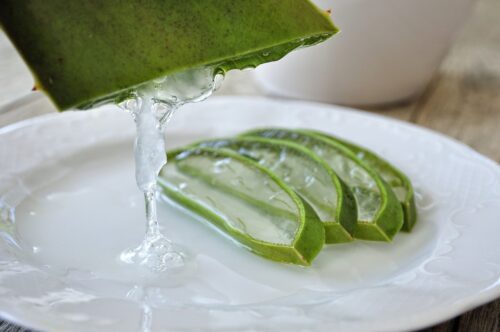Learn how to use Aloe Vera as a Rooting Hormone and try this cost-effective, eco-friendly method for successful planting.
Use Aloe Vera as a Rooting Hormone to give an excellent start to your plant cuttings. This natural rooting hormone alternative is readily available as a houseplant or in gardens and has no side effects like chemical ones.
What is Rooting Hormone
Rooting hormone is a compound that stimulates root growth; it occurs naturally and signals the plant to form roots. You can buy it from garden centers as a seed starting mix or use a mixture of pre-moistened potting soil, vermiculite, sand, coconut coir, perlite, or sphagnum moss.
The essential thing is to use something that holds moisture and is not very dense and hurdles newly grown roots.
Why Use Rooting Hormone
Rooting hormone is used for propagating plant cuttings; it works as a stimulus for new roots and saves the cuttings from diseases and fungus that come into existence during the cutting procedure.
Aloe Vera as a Rooting Hormone

You can prepare natural rooting hormones at home with simple ingredients in your garden. Aloe vera is a great, cost-effective choice for that purpose. There are many ways to use aloe gel as a rooting hormone for plant cuttings.
Direction:
- Make a cut on a fresh aloe vera leaf from the mature and healthy plant with a knife, extract the gel, and mix it with water. Blend them to get a slurry gel.
- Dip the cuttings in the aloe rooting hormone and set them in the growing medium. Spray the remaining solution on plants.
- The cuttings will root in the next 30 days if grown in favorable conditions.
Aloe veras contains salicylic acid, a rooting stimulant and anti-inflammatory. The gel is also full of enzymes and nutrients that help in root development. Also, it has 75 active components: minerals, vitamins, enzymes, sugars, saponins, lignins, and amino acids which support plant growth and root development.
Apart from that, Acemannan is a polysaccharide from aloe vera with antifungal and antibacterial qualities that protect the cuttings from mold, fungi, and microbes.
As this study discovered, aloe vera or other natural rooting hormones are more environmentally and pocket-friendly than synthetic rooting hormones.
NOTE: Avoid using packaged aloe vera gel as a rooting hormone. It contains preservatives and chemicals that may not suit the plant cuttings.
